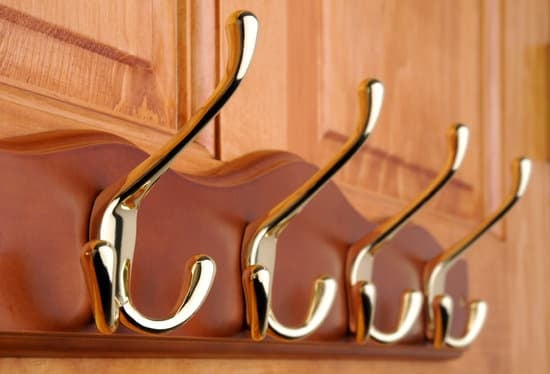Putting is a crucial skill in golf that can make or break your game. In this article, we will explore how to improve your putting at home, focusing on techniques and drills that will help you master this aspect of the game. Whether you’re a beginner looking to build a strong foundation or a seasoned player wanting to refine your skills, practicing putting at home can significantly enhance your performance on the course.
Improving your putting skills at home comes with numerous benefits. Not only does it allow you to practice anytime, regardless of the weather or time constraints, but it also provides a controlled environment where you can focus solely on your technique. By incorporating regular putting practice into your routine, you can develop consistency and accuracy, essential qualities for success in golf.
To create an effective indoor putting practice space, you’ll need key equipment such as a putting mat, target holes, alignment aids, and perhaps even a training aid like a mirror or video camera. Setting up this dedicated area in your home will allow you to work on various aspects of your putting stroke without distractions. By following specific drills and incorporating visualization techniques, you can enhance your mental focus and improve your overall putting performance.
Benefits of Improving Your Putting Skills at Home
Improving your putting skills at home can yield a multitude of benefits that can ultimately enhance your overall performance on the golf course. One of the key advantages of practicing putting at home is the convenience factor.
No longer are you limited by daylight hours or busy schedules to get in some valuable practice time. With a dedicated putting green setup at home, you can work on your putting technique whenever it fits into your day, ensuring consistent and regular practice.
In addition to convenience, practicing putting at home can also help you focus on specific aspects of your putting game that may need improvement. Whether it’s working on distance control, alignment, or tempo, having the freedom to dedicate time to drilling down on these areas can lead to significant improvements in your overall putting performance. By isolating and targeting these specific skills through regular practice at home, you can make tangible progress in refining and honing your technique.
Furthermore, practicing putting at home allows for a more controlled environment where distractions are minimized. This controlled setting provides an ideal space for purposeful and intentional practice that can translate into increased confidence and consistency on the golf course.
By creating a designated putting area in your home and incorporating proven drills and exercises into your routine, you can develop a strong foundation that will help you sink those crucial putts when it matters most. So, take advantage of the benefits of improving your putting skills at home and elevate your game to the next level.
Key Equipment Needed for Indoor Putting Practice
When it comes to improving your putting at home, having the right equipment is essential for creating a productive and efficient practice space. One of the key items you will need is a quality indoor putting mat.
These mats come in various sizes and styles, with some even featuring alignment aids and distance markers to help you work on your accuracy and consistency. Investing in a putting mat that simulates the feel of real grass can greatly enhance your practice sessions.
Another important piece of equipment for indoor putting practice is a reliable putter. Choose a putter that feels comfortable in your hands and suits your putting style. Having a consistent putter to use during practice will help you develop muscle memory and improve your stroke technique. Additionally, consider using training aids such as alignment sticks or mirrors to work on your setup, alignment, and stroke mechanics.
Practice Putting Cups
Incorporating practice putting cups into your setup can also be beneficial for refining your aim and speed control. These cups simulate the size of a standard golf hole and provide instant feedback on how well you are able to sink putts from various distances. By practicing with these smaller targets, you can improve your accuracy and build confidence in your putting abilities.
Golf Balls
Lastly, don’t forget about using high-quality golf balls for indoor putting practice. Opt for balls that are designed specifically for putting drills as they tend to have better roll characteristics on indoor surfaces. Using the same type of golf balls during practice sessions as you would on the course will allow you to get a more accurate representation of how your putts would perform in real game situations.
By incorporating these key pieces of equipment into your indoor putting practice routine, you can create an effective training environment that will help you hone your skills and improve your performance on the greens. Remember to also focus on mastering proper technique and maintaining a positive mindset throughout your practice sessions to maximize results in improving how to improve your putting at home.
Creating a Putting Practice Space in Your Home
To improve your putting at home, you need to designate a dedicated space where you can focus on practicing this crucial aspect of your golf game. Ideally, find a corner or area in your home that allows for an unobstructed putting stroke. Make sure the flooring is smooth and flat to simulate a real green as much as possible. Consider investing in a putting mat or carpet specifically designed for honing your skills.
One key equipment piece you’ll need for your indoor putting practice space is a quality putter. Choose one that feels comfortable in your hands and suits your putting style. Additionally, having some alignment aids such as strings or training guides can help you make sure your setup and stroke are consistently on target. A few golf balls and a cup to act as the hole are essential to create a realistic putting environment.
Setting up a mirror behind your practice area can also be beneficial for checking your posture, alignment, and eye position during your strokes. This visual feedback can help you make necessary adjustments to improve your technique. To further enhance your practice space, consider adding some indoor plants or decor elements that create a calming atmosphere conducive to focusing on your putting game.
| Equipment Needed | Benefits |
|---|---|
| Putter | Essential for practicing putting strokes. |
| Putting Mat | Simulates real green conditions for better practice. |
| Alignment Aids | Helps ensure consistent setup and stroke alignment. |
Essential Putting Drills to Master Your Technique
Putting drills are an essential part of improving your putting skills at home. By incorporating these drills into your practice routine, you can enhance your technique, accuracy, and confidence on the green. Here are some effective putting drills that you can easily do in the comfort of your own home:
Gate Drill
Set up two alignment sticks or any other objects a putter’s width apart about 3-6 feet away from the hole. Practice hitting putts through the “gate” to improve your aim and start line control. This drill will help you develop a consistent stroke and better distance control.
Clock Drill
Place 12 balls around the hole at clock positions (e.g. 12 o’clock, 3 o’clock, 6 o’clock) at varying distances (short, medium, long). Putt each ball to different targets while visualizing the clock face to work on speed control and distance consistency. This drill will also help you develop a feel for different lengths of putts.
One-Handed Putting Drill
Practice putting with only one hand to focus on your rhythm and feel for the putter head. Start by using your trail hand (right hand for right-handed golfers) and then switch to your lead hand (left hand for right-handed golfers). This drill will improve your touch and coordination when it comes to putting.
By consistently practicing these essential putting drills at home, you can make significant improvements in your putting technique and overall performance on the green. Remember to stay patient and disciplined in your practice routine to see positive results over time. Incorporating these drills into your daily or weekly putting practice sessions will help you build confidence and become a more proficient putter on the course.
Incorporating Visualization and Mental Focus Into Your Putting Routine
Improving your putting skills at home goes beyond just physical practice; it also involves incorporating visualization and mental focus into your routine. Mental visualization is a powerful technique that can help you improve your putting performance by mentally rehearsing successful putts before actually executing them. By visualizing the perfect putt, you can build confidence, enhance focus, and improve your overall consistency on the green.
One way to incorporate visualization into your putting routine at home is to create a mental image of the ball rolling smoothly into the hole. Before each putt, take a moment to visualize the line, speed, and break of the putt in your mind’s eye. By doing this consistently during practice sessions, you can train your brain to react more effectively when faced with similar putts on the course.
In addition to visualization, mental focus is crucial for improving your putting skills at home. Develop a pre-shot routine that helps you get into the right mindset before each putt.
This routine should include deep breathing exercises, positive self-talk, and a clear focus on your target. By staying present in the moment and shutting out distractions, you can improve your ability to execute putts with greater accuracy and confidence.Practice alongside by continually challenging yourself with different drills to stay motivated and determined in honing those skills effectively through regular training.
Tracking Progress and Setting Realistic Goals
Improving your putting skills at home requires more than just practicing aimlessly. To truly enhance your performance on the greens, tracking your progress and setting realistic goals are essential steps in your journey to becoming a better putter. By monitoring your improvement and establishing achievable objectives, you can stay motivated and focused on reaching new levels of success in your putting game.
One effective way to track your progress is by keeping a putting journal or log. This will allow you to document key metrics such as the number of putts made from various distances, successful completion rates of specific drills, and any observations about your technique or mental approach. By consistently logging this information, you can identify patterns, strengths, and areas for improvement in your putting performance.
In addition to tracking progress, setting realistic goals is crucial for maintaining momentum in your practice sessions. Whether it’s aiming to decrease the number of three putts per round or increasing the percentage of made putts within 10 feet, having specific and measurable objectives will give you a clear sense of direction in your training.
Use the SMART goal-setting framework – specific, measurable, attainable, relevant, and time-bound – to define goals that are challenging yet achievable within a reasonable timeframe.
- Keep a putting journal or log to track key metrics
- Set specific and measurable goals for improvement
- Use the SMART goal-setting framework for effective goal setting
By diligently tracking progress and setting realistic goals as part of your putting practice routine at home, you can optimize your efforts towards achieving peak performance on the greens. Remember that consistent practice combined with strategic goal-setting will not only enhance your putting skills but also build confidence in your overall game. So grab your putter, start logging those stats, and work towards mastering the art of putting from the comfort of home.
Troubleshooting Common Putting Mistakes and Solutions
Putting is a crucial aspect of golf that can make or break your game. While practicing putting at home can significantly improve your skills, it’s important to be aware of common mistakes that may hinder your progress. By identifying these mistakes and implementing solutions, you can enhance your putting technique and ultimately lower your scores on the course.
Here are some common putting mistakes and their corresponding solutions to help you improve your putting at home:
- Grip Pressure: One common mistake golfers make is gripping the putter too tightly. This can lead to inconsistent strokes and impact your accuracy. To improve this, focus on maintaining a light grip on the putter handle. Practice holding the putter with just enough pressure to control it without tensing up your hands.
- Alignment Issues: Another frequent mistake is poor alignment, where the aiming point does not match up with the target line. To address this, practice setting up properly by aligning your body parallel to the target line and ensuring that your putter face is square to the target. Utilize alignment aids such as alignment sticks or training aids to help reinforce correct alignment.
- Deceleration Through Impact: Many golfers struggle with decelerating their putter through impact, resulting in inconsistent speed control and distance. To fix this, focus on accelerating smoothly through the stroke while maintaining a constant pace. Incorporate drills such as distance control exercises or using a metronome to establish a consistent rhythm in your putting stroke.
By recognizing these common putting mistakes and implementing targeted solutions during your practice sessions at home, you can enhance your putting skills significantly. Consistent practice focusing on correcting these errors will ultimately lead to improved performance on the course. Remember, small adjustments can make a big difference in perfecting your putting technique and lowering your scores overall.
Taking Your Putting Skills From Home to the Course
Improving your putting skills at home is a great way to enhance your performance on the golf course. However, it is important to ensure that the progress you make indoors translates well to the outdoor environment. To successfully take your putting skills from home to the course, there are some transferability tips that you can follow.
One key tip is to practice on surfaces that mimic the conditions you will encounter on the golf course. While practicing at home, try setting up your indoor putting green on a carpet or mat that simulates the speed and texture of a real putting green. This will help you get accustomed to different types of grass and terrain variations, making your transition to the course smoother.
Additionally, it is essential to practice with a variety of putters and grips during your indoor putting sessions. By experimenting with different clubs and techniques at home, you can find what works best for you and build confidence in your putting stroke. This experimentation will allow you to adapt more easily when facing different challenges on the golf course.
Lastly, incorporating mental visualization and focus into your indoor putting routine can greatly improve your performance on the course. Visualize yourself sinking putts under pressure situations while practicing at home, and maintain a positive mindset throughout your practice sessions.
By honing in on these mental aspects of putting at home, you can build resilience and concentration that will carry over to your game when playing competitively. By following these transferability tips, you can effectively improve your putting skills at home and see positive results when out on the golf course.
Conclusion
Improving your putting skills at home can be a game-changer for your overall golf game. By dedicating time to practice in the convenience of your own space, you have the opportunity to refine your technique, enhance your mental focus, and ultimately become a more confident putter on the course.
Whether you are a beginner looking to establish a strong foundation or an experienced player aiming to shave strokes off your score, honing your putting skills at home is a valuable investment in your golf game.
To improve your putting at home, it is essential to focus on key aspects such as proper setup, alignment, stroke mechanics, and distance control. Utilizing simple yet effective drills like gate drills, speed control exercises, and pressure drills can help you develop consistency and precision in your putting stroke. Additionally, incorporating visualization techniques and mental exercises into your practice routine can elevate your performance under pressure on the greens.
Tracking your progress and setting realistic goals are crucial components of improving your putting at home. By monitoring improvements in accuracy, distance control, and consistency over time, you can identify areas that need further development and tailor your practice sessions accordingly.
Setting achievable goals based on incremental progress will keep you motivated and on track towards becoming a more proficient putter. Remember that consistent practice and dedication to refining your putting skills at home will pay dividends when you step onto the golf course.
Frequently Asked Questions
How Can I Practice Putting in My Living Room?
Practicing putting in your living room can be a convenient way to work on your skills without having to go to the golf course. You can set up a small putting green or use a putting mat to simulate the feel of real grass. Focus on your stance, grip, and alignment while practicing in this space.
How Can I Improve My Putting Fast?
Improving your putting quickly requires consistent practice and focus on key elements of your stroke. One effective way to see fast improvement is by working on your alignment, distance control, and tempo during practice sessions. Utilizing drills and putting aids can also help expedite the improvement process.
How Do Pros Practice Putting at Home?
Professional golfers often have dedicated spaces in their homes for putting practice. They may use high-quality indoor putting greens that mimic the conditions of a real golf course.
Pros focus on honing their technique, developing consistency in their stroke, and maintaining mental toughness even during at-home practice sessions. This kind of focused and deliberate practice helps them stay sharp when they’re not competing in tournaments.

I’m thrilled to have you here as a part of the Remodeling Top community. This is where my journey as an architect and remodeling enthusiast intersects with your passion for transforming houses into dream homes.





